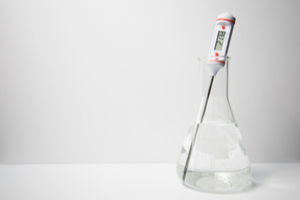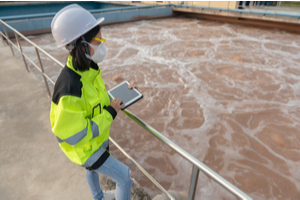Legionella is every building owner’s worst fear. A deadly bacteria, it is a threat to public health that can also thwart water utility operations. You can prevent the spread of Legionella with a careful strategy that examines your water system for all potential vulnerabilities. Every water facility has unique needs, meaning that your individual risk factors may vary, even when compared to the business next door. This is why it is important to work with an expert who can help you develop a custom strategy. This simple consideration can not only save you time but also prevent the growth of Legionella bacteria in your system.
Why Does Temperature Matter For Managing Legionella?
The temperature of your water matters because Legionella is sensitive to very cold and very hot temperatures. If the water temperature is too cold, the bacteria survives but can no longer reproduce.
If water becomes too hot, the bacteria may cease to proliferate or die off in their entirety. How long this process will take, and how effective it is at eliminating the entire bacteria population, will depend on the temperatures you maintain throughout your system.

Once the water temperature dips below 68 degrees Fahrenheit, it hinders Legionella bacteria growth but does not eradicate it. That means that you cannot use exclusively cold water to manage your Legionella risk, because the Legionella in the water will not die.
Hot water can present a similar challenge. Legionella bacteria no longer reproduce in water above 120 degrees Fahrenheit, but they do not die, either. You must increase water temperature levels above 130 degrees Fahrenheit before the bacteria begins to succumb.
It can still take several hours to kill all remaining bacteria. Even then, some bacteria may survive. All Legionella will die on contact if the water temperature is increased to 150 degrees Fahrenheit or above.
Unfortunately, it is not tenable to maintain a consistent water temperature of 150 degrees. It is not only expensive but also unsafe; when you expose human skin to water temperatures above 150 degrees, it can scald and develop third degree burns in less than a second. Water set to 130 degrees can still result in a severe skin injury after two seconds of exposure. Non-potable water should not be brought up to these temperatures for safety reasons.
Mixing Hot And Cold Water For Best Results

The best way to address managing Legionella bacteria is to alternate hot and cold water. Although you cannot deliver 150-degree water to the end user, you can force your water to briefly rise to that temperature – instantly killing Legionella bacteria – before mixing in cool water that lowers the temperature to a comfortable range.
If you shock your cold water supply by raising it to 150 degrees before allowing it to cool again, it mixes safe water with freshly sterilized hot water and can thereby remove any risk of Legionella in your system.
Preventing Stagnation To Encourage Ideal Temperatures
Another method for preventing and managing Legionella is to prevent stagnation in your water system. Stagnant water is a health hazard because it fosters the growth of biological material that feeds Legionella; it also corrodes your water system’s hardware, creating a safe haven for bacteria.
Worse yet is the fact that it is difficult to regulate the temperature of stagnant water. If the water cannot flow unobstructed, it may cool or warm faster than intended and exit the ideal temperature range. Fix water stagnation and dead legs to improve control over managing Legionella.
Remedying External Factors That May Cause Problems

Just as stagnant water can complicate temperature control measures, so too can external factors. If you have cold water pipes that run through an area exposed to several hours of direct sunlight, the water that you expect to remain below 68 degrees Fahrenheit may rise to the danger zone. Be sure to evaluate your entire system, both inside and out, to spot other issues that can be remedied before addressing the issue via temperature control.
Trust The Experts To Assist With Managing Legionella
Controlling Legionella bacteria is not just a safety obligation. If you operate a facility like a cooling tower, it is also a legal and regulatory compliance requirement.
However, you do not need to develop a Legionella control strategy all on your own. The experts at Tower Water would be happy to help you identify and resolve your facility’s weaknesses.
Reach us out to learn more or to schedule an appointment to get started with prevention or remediation.
